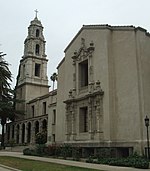Harada House
1884 establishments in CaliforniaEthnic museums in CaliforniaHistory museums in CaliforniaHouses completed in 1884Houses in Riverside County, California ... and 10 more
Houses on the National Register of Historic Places in CaliforniaJapanese-American culture in CaliforniaJapanese-American memorialsLandmarks in Riverside, CaliforniaMuseums in Riverside, CaliforniaMuseums of Japanese culture in the United StatesNational Historic Landmarks in CaliforniaNational Register of Historic Places in Riverside County, CaliforniaProperty law in the United StatesUse mdy dates from August 2023

The Harada House (Japanese: ハラダハウス, Harada Hausu) is a historic house in Riverside, California. The house was the focus of a critical application of the California Alien Land Law of 1913, which prevented foreigners who were ineligible for citizenship from owning property. The state of California attempted to seize the property from the family in California v. Harada, but the Haradas ultimately won the case and retained ownership of the house. The house, created in 1884 and built upon by the Harada family, was declared a National Historic Landmark in 1990 and is currently overseen by the Museum of Riverside.
Excerpt from the Wikipedia article Harada House (License: CC BY-SA 3.0, Authors, Images).Harada House
Lemon Street, Riverside
Geographical coordinates (GPS) Address Nearby Places Show on map
Geographical coordinates (GPS)
| Latitude | Longitude |
|---|---|
| N 33.985 ° | E -117.36916666667 ° |
Address
Lemon Street 3370
92501 Riverside
California, United States
Open on Google Maps







